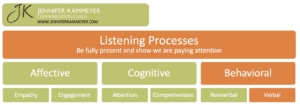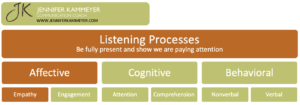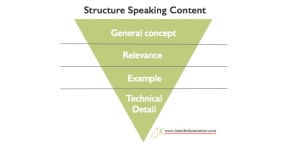Fear of public speaking, conflict avoidance, dread of delivering bad new – many communication interactions can lead us to a sense of discomfort. Handling these tough interactions skillfully requires us practicing in order to get more comfortable with the discomfort. What typically happens is that emotions arise that throw us out of our prefrontal cortex of executive function and into our amygdala reptile brain of flight/fight/freeze. In that moment, we need the skills to reverse that phenomenon quickly so we have the wherewithal to cope. The skills required are awareness to notice what has happened and calming techniques to quickly reduce the adrenalin and restore equanimity. Let’s look at some of the situations that tend to get us riled and explore ways to practice with discomfort.
Discomfort Triggers
We’ve all heard that fear of public speaking is the number one phobia, so it is not surprising that it causes discomfort. Giving a speech puts us in a vulnerable position of being judged by others, which can trigger emotions of fear and unworthiness. While it is true that many people feel significant discomfort when they are giving a speech, in my experience it is not the most common creator of discomfort in communication. The more frequent complaints I hear working with professionals as a communication coach are about the discomfort from dealing with conflict, giving criticism, and delivering bad news. These items have in common that they are confronting others one-on-one with the risk of hurting or insulting another person. Because we as humans have such a strong need to feel a sense of belonging, we to strive to create connection. Confrontation risks breaking connection and therefore triggers discomfort.
Practice with Discomfort
Engaging in interactions that create discomfort is one way to practice, but that is high risk until we have mastered the awareness and emotional regulation. It is better to first practice being with discomfort outside of situations that generate discomfort. This requires imagining the situation with detailed visualization engaging all senses, then feeling the subsequent emotions arise and processing those emotions with a technique. Ways to practice listed here are all mindfulness techniques and can be used both in visualizations and in real life communication interactions that trigger discomfort.
Use the Breath to Calm the Body – Breathe in 4 counts, hold 4 counts, exhale 8 counts
“Breathing in, I know the feeling of despair is in me. Breathing out I know this is only one feeling and I am much more than one feeling.” Thich Nhat Hanh
IRL: Before going on stage to speak, pause, turn focus inward, and practice this breathing technique. As you are breathing out for the long period, silently say to yourself that you are much more than what you are feeling at this moment. Doing just three of these types of breath will calm your fight/flight/freeze physiological reactions and get you ready to do your best public speaking.
Approach with Curiosity – What might happen? How can I be with that?
“When you see the beginnings of a healthy conflict, you should lean into it. Say, ‘That’s interesting, this feels productive. Let’s talk about it.’ It signals that you are intentionally fostering ideas.” Jack Altman, CEO of Lattice from First Round Review article, The Ultimate Guide to Running Executive Meetings.
IRL: When somebody disagrees with your idea in a meeting, pause and notice the initial reaction, take a breath, and then intentionally shift to being curious. The first thing that comes out of your mouth should be a genuine question. For example, “Hmm, I hadn’t thought of it that way before, can you explain your thought process so I can fully understand?”
RAIN – Recognize what is happening; Allow it to be; Investigate with kindness; Nurture it
“The RAIN technique is a simple, yet highly effective way of tuning into our inner world and creating a pause between the stimulus of the outside world and our reaction.” Tara Brach
IRL: Delivering bad news, such as letting an employee go or telling a client the goal was not met, is a good time to use the RAIN technique. When developing talking points, pay attention to feelings without pushing them away. Let the emotions guide what you are going to say. Then in the moment, honor your feelings and those that are likely to arise in the other person, in order to be with the discomfort of the situation without any pretense that things should be otherwise.
The purpose of practicing outside of the moment is to experience the reaction and repeat the process over and over until we feel more comfortable with it. We practice until we feel comfortable with the rising of emotions and the mechanisms of calming the emotions so we can interact skillfully. Think of it like practicing a tennis serve or a basketball show – repetition is what makes our bodies build muscle memory and it give us a level of comfort.
Over time, practicing being with discomfort will increase our comfort with the human process of having strong emotions arise and modulating those emotions so that we can make clear decisions and communicate skillfully. Then in the moment, being comfortable with discomfort, we can stand strong and grounded on stage and belt out our opinions on a subject, we can approach conflict with the true desire to understand another’s perspective, we can share criticism in a way it can be heard as caring, and we can deliver bad news with the presence that allows space for all emotions.





